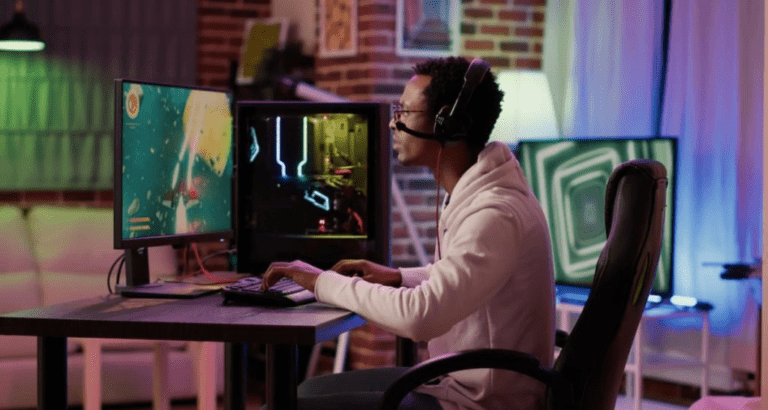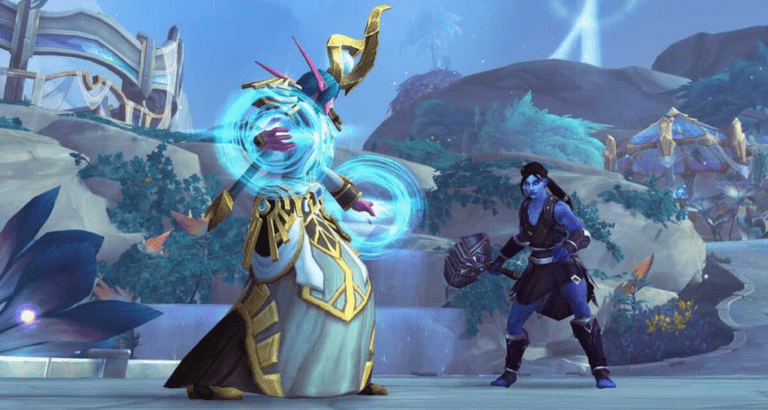Takeaway
Maintaining visual consistency when outsourcing game assets is crucial for preserving the integrity of your game’s artistic vision. By implementing a structured approach that includes clear guidelines, effective communication, and rigorous quality control, game developers can ensure that outsourced assets align seamlessly with the overall aesthetic and gameplay experience.
Understanding Visual Consistency in Game Development
Visual consistency refers to the harmonious integration of various artistic elements within a game, including character design, environment art, UI elements, and animations. This consistency is vital for creating an immersive experience that resonates with players. When outsourcing game assets, the risk of visual inconsistency increases due to varying artistic styles, techniques, and interpretations from different artists or studios. Therefore, establishing a robust framework for maintaining visual consistency is essential.
1. Establishing a Comprehensive Art Style Guide
The foundation of visual consistency lies in a well-defined art style guide. This document should encapsulate the following elements:
- Color Palette: Define a specific color palette that reflects the mood and theme of the game. Include primary, secondary, and accent colors.

- Character Design: Provide detailed descriptions and reference images for characters, including proportions, clothing, and facial expressions.
- Environment Art: Outline the style of environments, including textures, lighting, and architectural elements.
- UI/UX Elements: Specify the design of user interface components, including buttons, menus, and icons.
- Animation Style: Describe the animation techniques to be used, such as frame rates, easing functions, and character movement styles.
By creating a comprehensive art style guide, you provide outsourced artists with a clear reference point, reducing the likelihood of misinterpretation and ensuring that all assets align with the intended visual direction.
2. Effective Communication and Collaboration
Communication is paramount when working with external teams. Establishing a collaborative environment can significantly enhance the quality of the outsourced assets. Here are some strategies to improve communication:
- Regular Check-ins: Schedule weekly or bi-weekly meetings to discuss progress, address concerns, and provide feedback. This ensures that everyone is aligned with the project goals.

- Use Visual References: Share visual references and examples to clarify expectations. This can include mood boards, concept art, and screenshots from similar games.
- Feedback Loops: Implement a structured feedback process where artists can submit their work for review. Provide constructive feedback that is specific and actionable.
By fostering open lines of communication, you can mitigate misunderstandings and ensure that the outsourced assets meet your visual standards.
3. Utilizing Asset Management Tools
Asset management tools play a crucial role in maintaining visual consistency. These tools help organize, track, and manage game assets throughout the development process. Consider the following:
- Version Control Systems: Use version control systems like Git or Perforce to manage changes to assets. This allows you to track revisions and revert to previous versions if necessary.
- Asset Repositories: Create a centralized repository for all game assets. This should include folders for different asset types, along with naming conventions that make it easy to locate specific files.
- Documentation: Maintain thorough documentation for each asset, including its purpose, usage guidelines, and any specific requirements. This ensures that all team members have access to the information they need.
By leveraging asset management tools, you can streamline the workflow and maintain a high level of organization, which is essential for visual consistency.
4. Quality Control and Review Processes
Implementing a rigorous quality control process is vital for ensuring that outsourced assets meet your visual standards. Here are some best practices:
- Establish Review Criteria: Define clear criteria for asset reviews, including adherence to the art style guide, technical specifications, and overall quality.
- Conduct Regular Reviews: Schedule regular review sessions where team members can evaluate the quality of the assets. This can include peer reviews, where artists critique each other’s work.
- Final Approval Process: Implement a final approval process where assets must be signed off by a lead artist or art director before being integrated into the game.
By instituting a thorough quality control process, you can catch inconsistencies early and ensure that all assets align with your artistic vision.
5. Training and Onboarding for Outsourced Teams
When working with outsourced teams, it is essential to provide adequate training and onboarding to ensure they understand your expectations. Consider the following approaches:
- Orientation Sessions: Conduct orientation sessions to introduce the outsourced team to your company culture, project goals, and artistic vision.
- Workshops and Tutorials: Offer workshops or tutorials on specific tools, techniques, or workflows that are relevant to the project. This can help bridge any skill gaps and align the team’s capabilities with your needs.
- Mentorship Programs: Pair outsourced artists with in-house team members for mentorship. This can facilitate knowledge transfer and help maintain visual consistency.
By investing in training and onboarding, you can empower outsourced teams to produce high-quality assets that align with your visual standards.
Conclusion
Maintaining visual consistency when outsourcing game assets is a multifaceted challenge that requires careful planning and execution. By establishing a comprehensive art style guide, fostering effective communication, utilizing asset management tools, implementing rigorous quality control processes, and providing training for outsourced teams, game developers can ensure that their artistic vision remains intact. The key takeaways include:
- Develop a detailed art style guide to serve as a reference for outsourced artists.
- Maintain open communication and collaboration with external teams.
- Utilize asset management tools to organize and track game assets.
- Implement a thorough quality control process to ensure high standards.
- Provide training and onboarding to align outsourced teams with your vision.
By following these strategies, game developers can successfully navigate the complexities of outsourcing while maintaining the visual integrity of their projects.
Source: “The Importance of Visual Consistency in Game Development,” Game Developer Magazine, September 2023.

